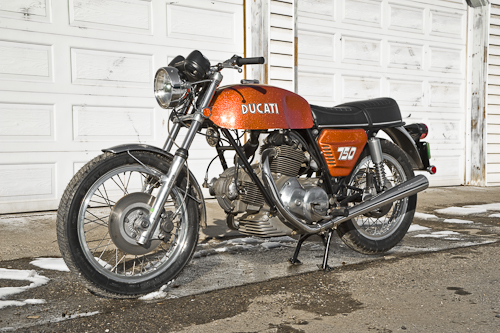Moto Ceccato and Ted Galelli
Gotta’ love writing about motorcycles. More interesting than the machines, though, are the stories that emerge about the people who ride them. Five years ago I was researching an article for Motorcycle Classics magazine about photographer Guy Webster’s 1955 Moto Ceccato 75cc Grand Prix. Webster is passionate about his Italian motorcycles, and the little DOHC Ceccato is a rare machine. In talking to Webster I learned about Ted Galelli, an ex-racer of Ceccato motorcycles. I’ll get to Galelli again in a moment, but here’s some background on Ceccato and the DOHC 75cc engine.
The DOHC 75cc Ceccato engine in Guy Webster’s machine — a very rare motor! Image courtesy Motorcycle Classics magazine.
The machine Webster owns is believed to be the only survivor of five produced in Pietro Ceccato’s factory on the outskirts of Vicenza, Italy, a small city about 38 miles west of Venice. Pietro Ceccato was the son of an aristocratic family and his parents wanted him to become a pharmacist. He did, but was never truly happy in this occupation. Always fascinated by things mechanical Ceccato opened a manufacturing facility that focused on building industrial equipment including burners for bakery ovens, air compressors and gas station hardware.
Ceccato took a look at the transportation industry of post Second World War Italy and decided to build and market a clip on motor for bicycles. Lightweight motorcycles were not far behind, and this is where the story gets interesting. There’s a connection between Ceccato and Fabio Taglioni, one of Italy’s best-known motorcycle designers who worked for many years with Ducati. Before Taglioni pioneered his desmodromic valve train in Ducati singles, and before engineering the L-twin engine design of the Ducati 750 GT he drew up a tiny jewel of a double overhead cam engine. In 1949 he sketched a twin cam 75cc engine as a design exercise while studying to get his doctorate at the University of Bologna. He sold the resulting engine plans to Ceccato before working for two years with Italian maker Mondial, and then finally joining Ducati in 1954.
In Ceccato’s hands the 75cc twin cam engine was improved upon with the addition of gear drive for the cams as opposed to chain drive as originally envisioned by Taglioni. It is thought that only five of the twin cam 75cc engines were constructed, and these limited production motors went into Ceccato factory racing machines circa 1954 and 1955. And it is one of these five motorcycles Guy Webster now owns.
Ceccato’s twin cam powerplant is all alloy, and is built in unit construction with a gear drive primary transferring power pulses to the four-speed gearbox. Valve springs are exposed. Installed in a double-downtube frame with swingarm rear suspension and hydraulic forks up front the overall package weighed approximately 200 lbs. Depending on the type of racing the machine was going to see either an 18mm, 20mm or 22mm Dell’Orto remote float carburetor was bolted to the integral intake manifold.
Changes were made to the engine when the twin cam arrangement became a single cam. In one printed interview Taglioni has said the twin cam was too heavy to effectively compete in the Giro d’Italia. Ceccato fairly dominated the races they entered with machines powered by both the twin and single cam 75cc engines. A long list of race victories, including the first nine of 10 positions at the Giro d’Italia in 1956 helped put Ceccato’s name in the record books. Unfortunately, Pietro Ceccato died an early death and while the company continued to construct motorcycles further development of a 125cc world championship machine ended.
Ceccato continued to produce both street motorcycles and off road machines until the early 1960s, and the company still exists today as a manufacturer of high-tech car wash equipment and compressors.
A young Ted Galelli aboard one of his first motorcycles, a workaday Jawa. There was nothing plain about his next machine, however…
Now, back to Ted Galelli. Born in Italy, Galelli moved to South America with his family when he was 14. He raced Ceccato motorcycles, and in 1959 finished first in the Argentinian 75cc road racing championship aboard a single cam Ceccato. “I used to have a 1,000cc Vincent to ride on the streets,” Galelli says. “Getting on the Ceccato was like getting on a bicycle in comparison.”
…as it was a 1949 Vincent Rapide fitted with dull chrome fenders scuffed to look like aluminum. The leopard-print saddle cover was made to Galelli’s specifications by a local upholsterer. “It looked good to me,” he says, and we’d have to agree. Galelli was 21 when he bought the Vincent, and he doesn’t know how he managed to buy it. “I had an angel on my shoulder, I think.”
There was a connection between the Zanella motorcycle factory in Argentina and the Ceccato factory in Italy. Zanella produced some Italian designed machines, including Ceccato, under license. To the Zanella factory Ceccato sent race-prepared machines.
“The Ceccatos were used race motorcycles, but they came with lots of spare parts,” Galelli says. During part of 1958 and all of 1959 Galelli raced Ceccato motorcycles in either the 75cc or 100cc classes.
Ted Galelli is No. 151 aboard a 75cc Ceccato single cam. Note the helmet decoration — Galelli says it was just a decal he applied, and immediately after winning the race someone walked off with his headgear!
Great fins on the drum brakes of Galelli’s Ceccato race machine.
“Racing the 75cc was about as exciting as racing a 250cc might be today,” Galelli says. “The tires on the Ceccato 75cc were like a balloon-bicycle tire. The Ceccato had an 11,000 r.p.m. limit, and the handling was no problem at all. The Ceccato had a very long first gear, and you had to slip the clutch for a few seconds in order not to stall the motor. I never had a breakdown.”
Although he remembers his 75cc single cam Ceccato racer as being very reliable he did on one occasion hole a piston when simply warming up the motor.
Galelli’s interest in Ceccato never waned, and now living in California, he maintains a modest collection of rare Italian machines. He’ll be at the 2014 La Jolla Concours d’Elegance in two weeks to show his 1955 Gilera 150 Sport.
Galelli’s 1959 Ceccato 100 2-stroke, 3-speed…
…and Galelli’s 1956 Ceccato 125cc, 4-stroke, 4-speed, followed by…
…Galelli himself and the 1955 Gilera 150 Sport he plans to display at the 2014 La Jolla Concours d’Elegance.

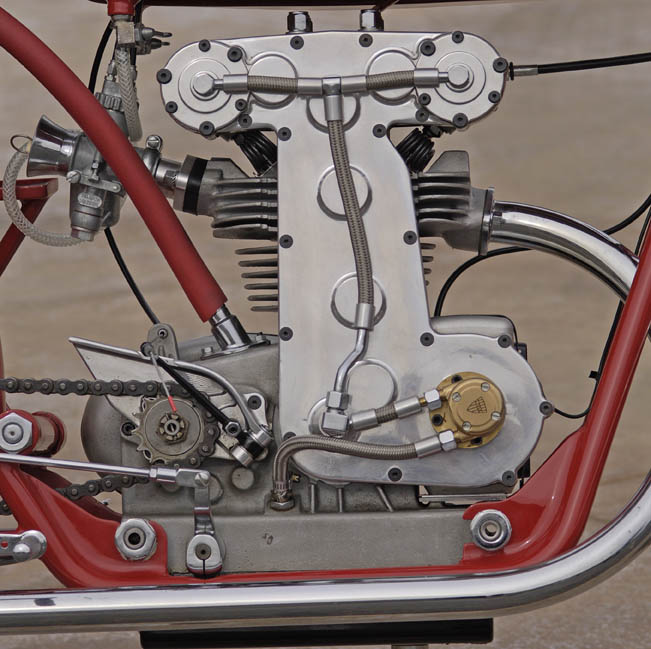
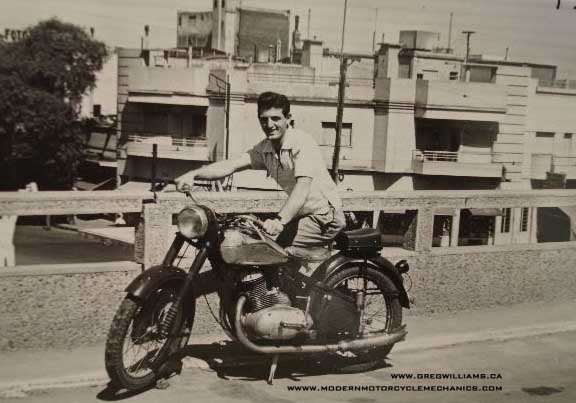
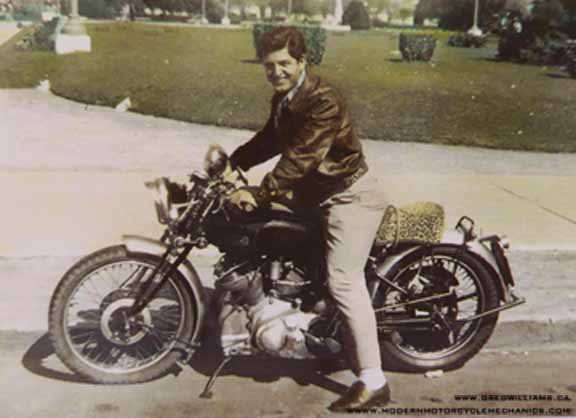

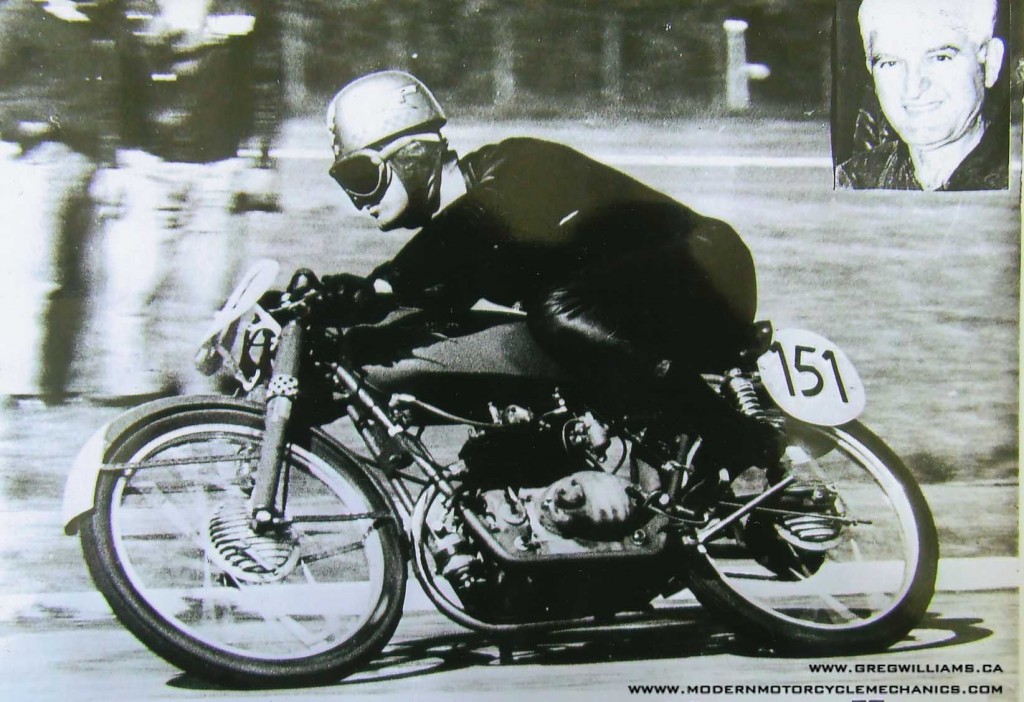
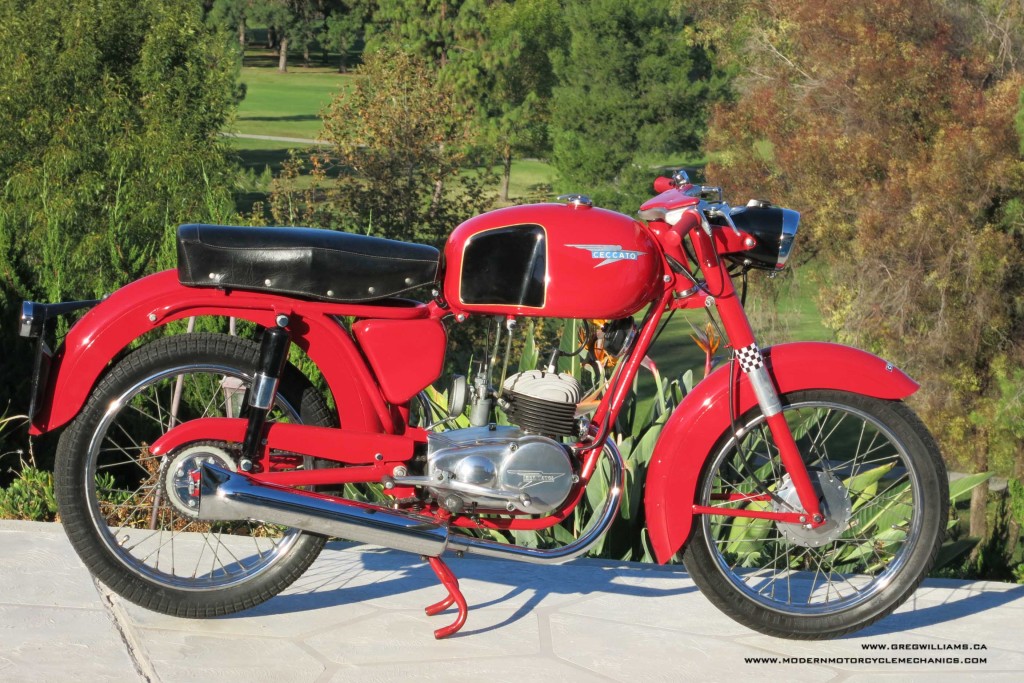
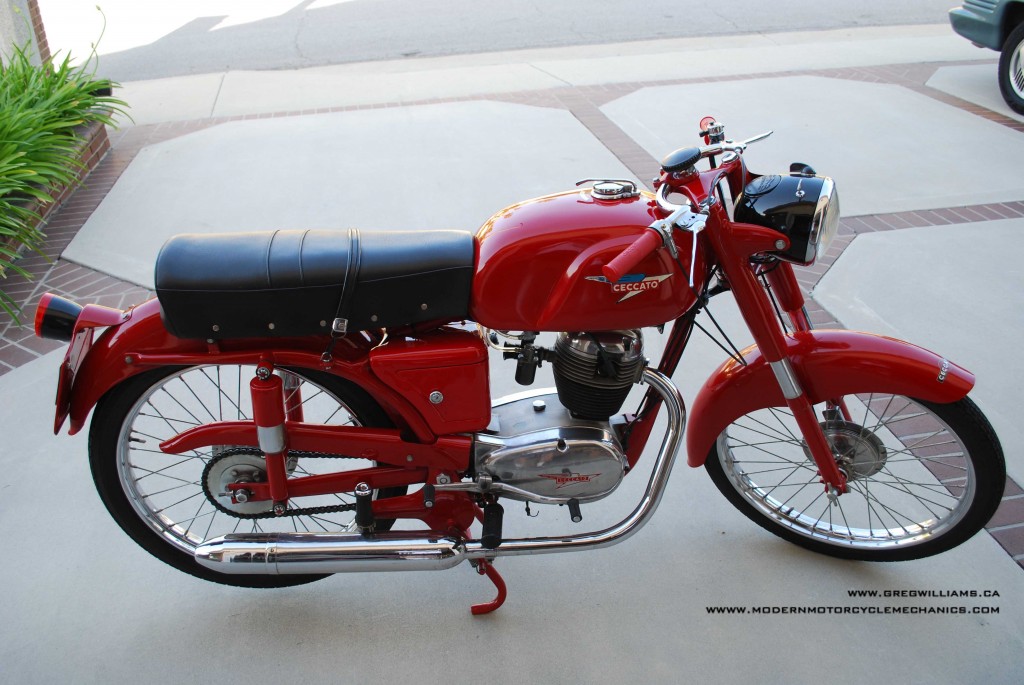
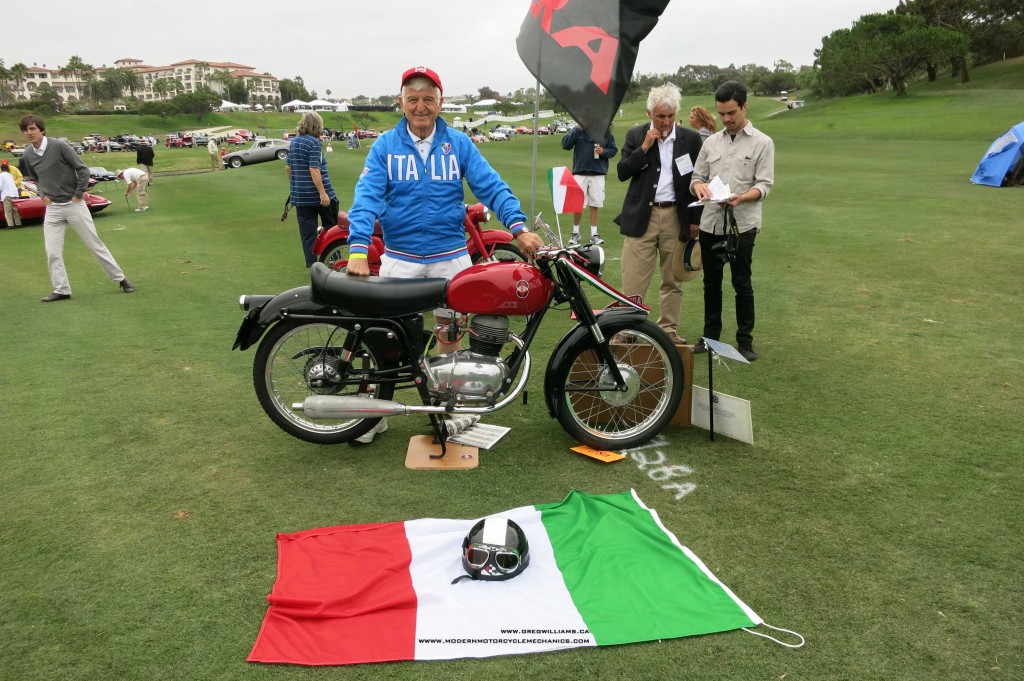
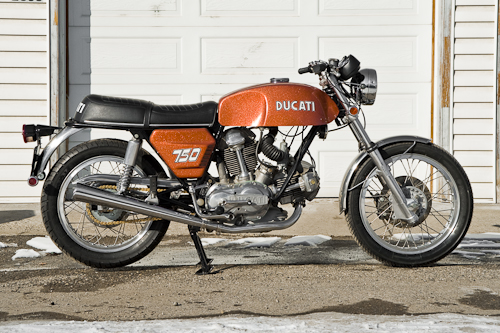 All photos are courtesy
All photos are courtesy 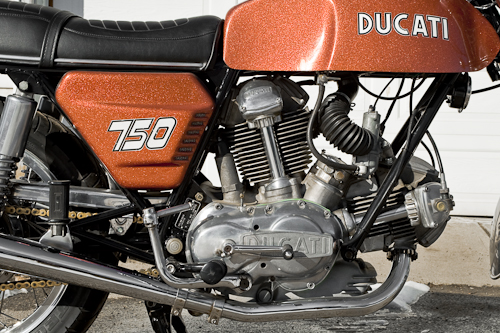 First introduced at the Olympia motorcycle show in London in 1971 the Ducati 750 GT immediately made a splash. It took a long time to fill orders, though, because the first 404 sand cast case motors were built entirely by hand. It took Ducati mechanics 40 hours to completely assemble a motor and set up the bevel-gear drive.
First introduced at the Olympia motorcycle show in London in 1971 the Ducati 750 GT immediately made a splash. It took a long time to fill orders, though, because the first 404 sand cast case motors were built entirely by hand. It took Ducati mechanics 40 hours to completely assemble a motor and set up the bevel-gear drive.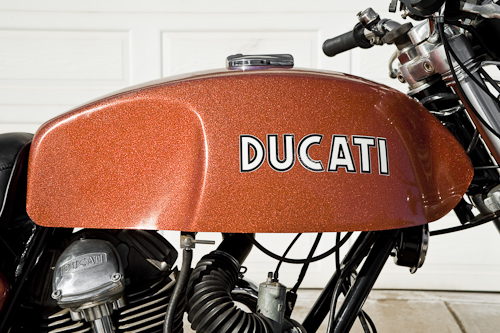 Work on the Ducati progressed slowly, and somewhat sporadically. Unfortunately, Parsons was diagnosed with MS in the late 1990s, and the Ducati project got put on the back burner. “He was feeling badly about leaving his bike behind in my garage and not dealing with it,” Johansen says. “I told him to just deal with what you have to deal with — the bike’s fine where it is.”
Work on the Ducati progressed slowly, and somewhat sporadically. Unfortunately, Parsons was diagnosed with MS in the late 1990s, and the Ducati project got put on the back burner. “He was feeling badly about leaving his bike behind in my garage and not dealing with it,” Johansen says. “I told him to just deal with what you have to deal with — the bike’s fine where it is.”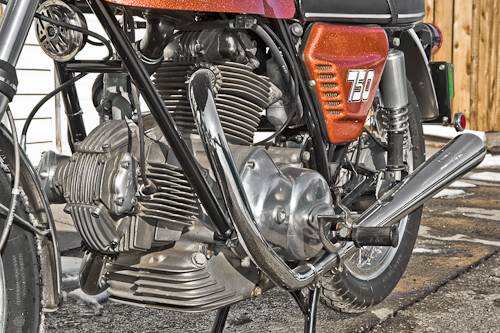 Soon after he took ownership of the Ducati Johansen began collecting the various parts he’d need to put the 750 GT back together. He acquired new pistons, rings, pins and gaskets, and a brake rebuild kit for the front Lockheed hydraulic disc. Johansen also purchased a set of the newly reproduced Conti mufflers as the originals had long since rotted away. While the orange Fiberglass gas tank had faded to silver, an experienced auto body man hand rubbed the finish and brought back the colour to about 85 per cent of its original sheen. He put two coats of clear over the tank, and that’s the way it sits — as close as possible to the original Ducati orange. The frame was restored with a fresh coat of paint. Wheels, which are flanged Borrani rims, were laced back together with stainless steel spokes and new Metzeler tires went on front and rear.
Soon after he took ownership of the Ducati Johansen began collecting the various parts he’d need to put the 750 GT back together. He acquired new pistons, rings, pins and gaskets, and a brake rebuild kit for the front Lockheed hydraulic disc. Johansen also purchased a set of the newly reproduced Conti mufflers as the originals had long since rotted away. While the orange Fiberglass gas tank had faded to silver, an experienced auto body man hand rubbed the finish and brought back the colour to about 85 per cent of its original sheen. He put two coats of clear over the tank, and that’s the way it sits — as close as possible to the original Ducati orange. The frame was restored with a fresh coat of paint. Wheels, which are flanged Borrani rims, were laced back together with stainless steel spokes and new Metzeler tires went on front and rear.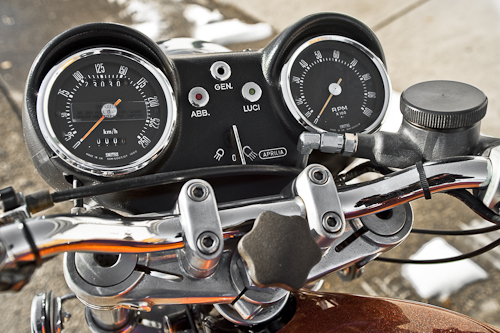 The push to get the 750 GT completely back together came when a local Ducati retailer wanted to borrow the bike when they launched the new Sport Classic Ducati series at a downtown art gallery. Johansen assembled the rolling chassis, and put the motor together loosely. He still has to pay some attention to the condition of the cams and followers, which are scored probably due to oil starvation, and he hopes to have the machine running again this year. “I’m not the least bit interested in interesting paperweights,” Johansen says of his motorcycles, a collection that includes Suzuki GT750s, rotary RE5s, and three more Ducatis.
The push to get the 750 GT completely back together came when a local Ducati retailer wanted to borrow the bike when they launched the new Sport Classic Ducati series at a downtown art gallery. Johansen assembled the rolling chassis, and put the motor together loosely. He still has to pay some attention to the condition of the cams and followers, which are scored probably due to oil starvation, and he hopes to have the machine running again this year. “I’m not the least bit interested in interesting paperweights,” Johansen says of his motorcycles, a collection that includes Suzuki GT750s, rotary RE5s, and three more Ducatis.